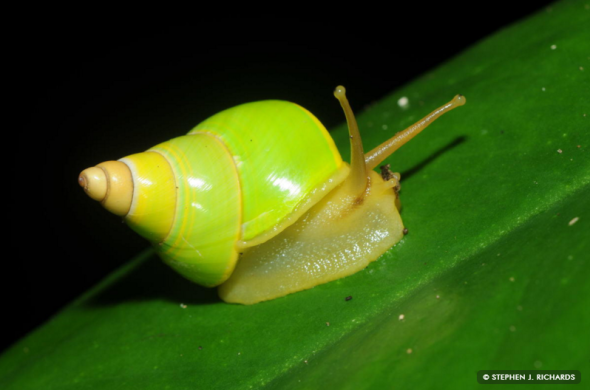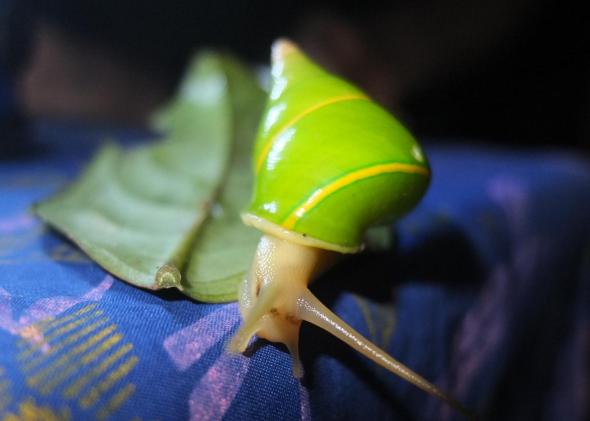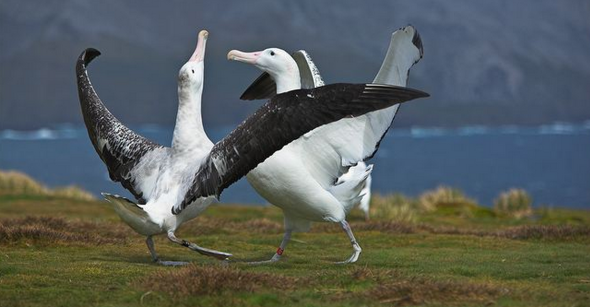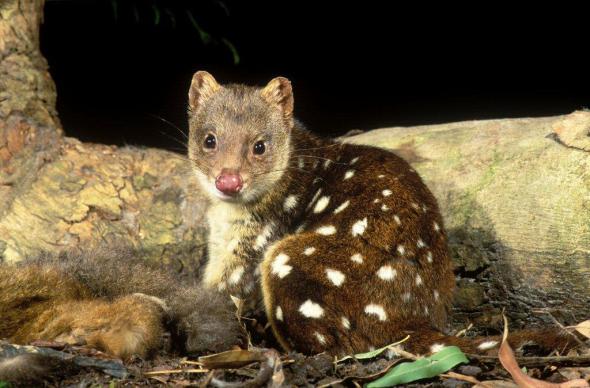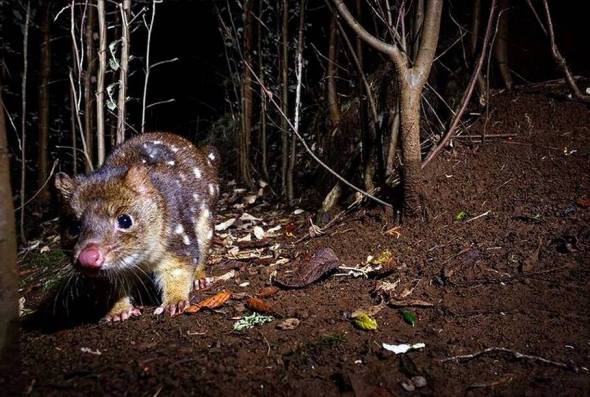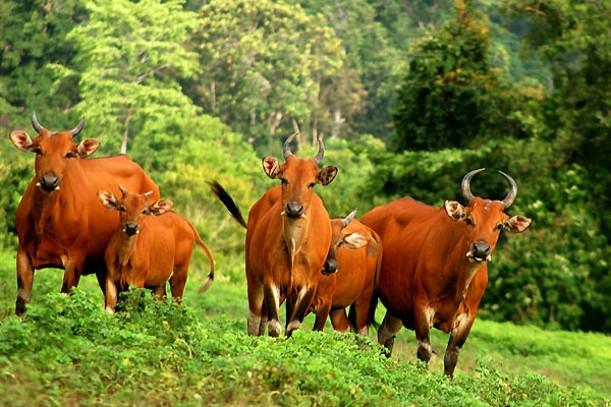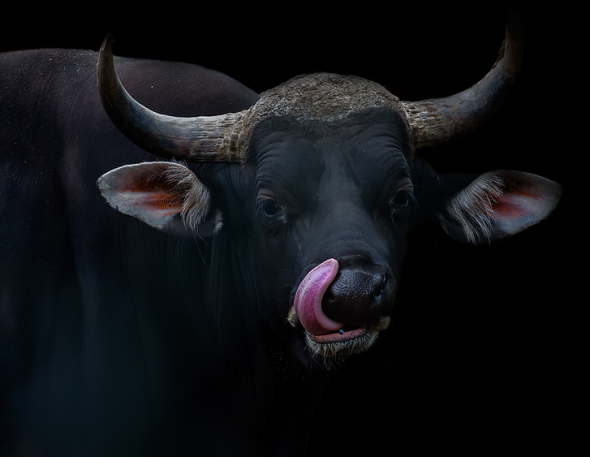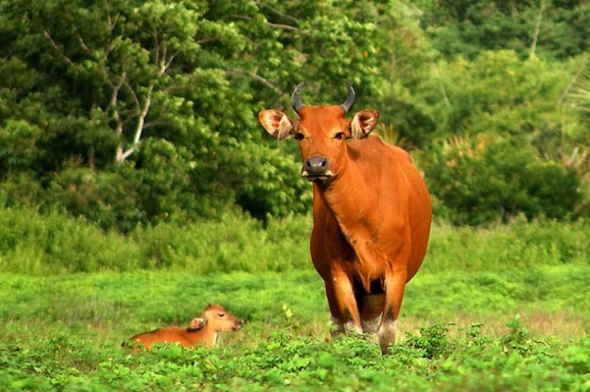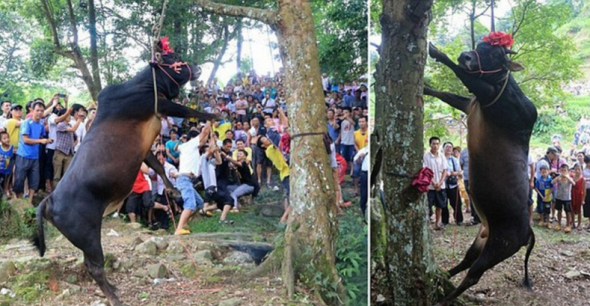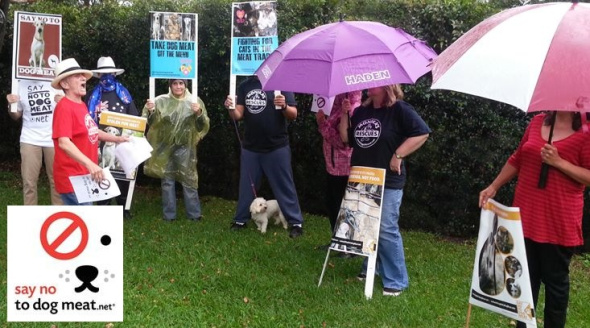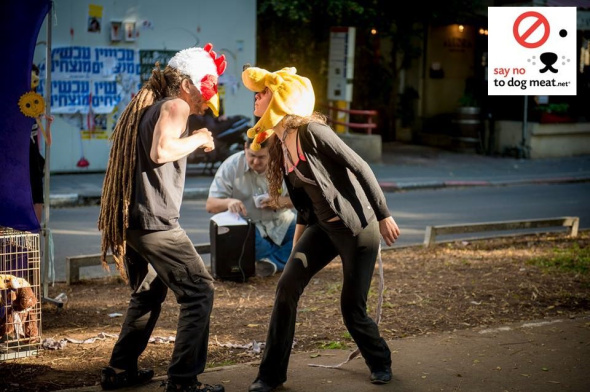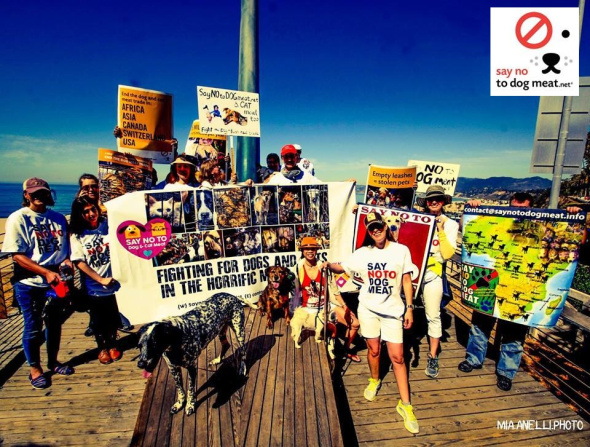ENDANGERED SPECIES MONDAY | PHOCARCTOS HOOKERI EXTINCTION LOOMING - NATIONAL EMERGENCY.
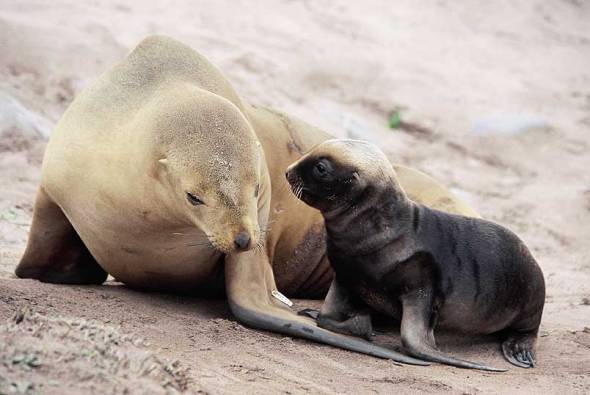
ENDANGERED SPECIES MONDAY | PHOCARCTOS HOOKERI
This Monday’s endangered species (E.S.P.) article I’ve chosen to document on the New Zealand sea lion. Image: New Zealand Sea Lion. Credits: Tui De Roy.
Listed as (endangered) the species was identified by Dr Gray back in 1866. Dr Gray John Edward Gray, FRS (12 February 1800 – 7 March 1875) was a British zoologist. He was the elder brother of zoologist Dr George Robert Gray and son of the pharmacologist and botanist Dr Samuel Frederick Gray (1766–1828).
Dr Gray was Keeper of Zoology at the British Museum in London from 1840 until Christmas 1874, before the Natural History holdings were split off to the Natural History Museum published several catalogues of the museum collections that included comprehensive discussions of animal groups as well as descriptions of new species. He improved the zoological collections to make them amongst the best in the world.
Scientifically identified as the Phocarctos hookeri the species was listed as vulnerable from 1994-2008. Unfortunately due to continued population declines the New Zealand seal is now bordering complete extinction within the wild (and things really aren’t looking good neither) Endemic to Australia (Macquarie Is.); and New Zealand (South Is.), the species is also native to the Pacific North West.
To date there is estimated to be no fewer than 3,031 mature individuals remaining within the wild. New Zealand sea lions are one of the largest New Zealand animals. Like all otariids, they have marked sexual dimorphism; adult males are 240–350 cm long and weigh 320–450 kg and adult females are 180–200 cm long aMnd weigh 90–165 kg. At birth, pups are 70–100 cm long and weigh 7–8 kg; the natal pelage is a thick coat of dark brown hair that becomes dark gray with cream markings on the top of the head, nose, tail and at the base of the flippers.
Adult females’ coats vary from buff to creamy grey with darker pigmentation around the muzzle and the flippers. Adult males are blackish-brown with a well-developed black mane of coarse hair reaching the shoulders. New Zealand sea lions are strongly philopatric.
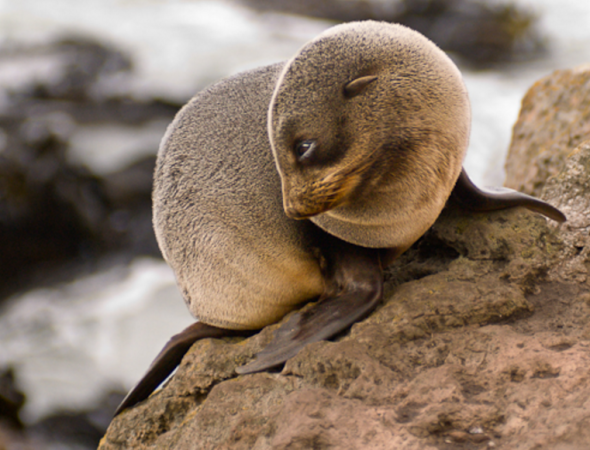
Image: New Zealand Sea Lion Pup. Credits: NZ Fur Seals.
Back in 2012 populations of New Zealand sea lions “were estimated to be standing at a population count of 12,000 mature individuals”. However since that count took place, from (2014) populations have ‘allegedly plummeted’ to all new levels although there doesn’t appear to be any evidence as to why the species suddenly declined - fish trawling and disease have been noted though!.
Like the Maui’s dolphin, the sea lion has come under intense scrutiny this year after research showed its numbers had halved since 1998. It has been classed as nationally critical and if its decline is not stemmed will be extinct within 23 years. A bacterial infection severely reduced breeding in 1997-98, and the species has failed to recover.
Its decline has been compounded by deaths due to squid fisheries, which trawl at a similar depth to the sea lions’ hunting grounds. Conservation groups call the population decline “a national emergency and are calling on stricter by-catch limits and a change in fishing methods”.
BACK IN 2012 THE NEW ZEALAND HERALD REPORTED THE FOLLOWING
In a country with 2800 threatened species, conservation in New Zealand is often about picking winners. The Department of Conservation’s budget and energy can extend only to active interventions for 200 of these endangered species.
Whether a species is protected depends on funding, community input, national identity and research. DoC spokesman Rory Newsam says interventions are often made because the department believes it can “get the most bang for its buck”. But animals and plants are not always invested in because they have a greater chance of survival.
The kakapo receives a relatively large chunk of funding despite being functionally extinct on the mainland. Some ecologists argue too much is spent rescuing the rare parrot, while more crucial parts of our ecosystem are left behind. But the kakapo is protected because it is a charismatic species and the public considers it integral to New Zealand’s ecological identity.
Conservationists say kakapo are a window to New Zealand’s history. They are believed to have inhabited the Earth for millions of years. To kill them off in a fraction of that time is an indictment on the way we live.

Image: New Zealand Sea Lion. Image Credits One Newz.
New Zealand sea lions are known to predate on a wide range of prey species including fish (e.g. hoki and red cod), cephalopods (e.g. New Zealand arrow squid and yellow octopus), crustaceans, seabirds and other marine mammals. Studies indicate a strong location effect on diet, with almost no overlap in prey species comparing sea lions at Otago Peninsula and Campbell Island, at the north and south extents of the species’ breeding range. New Zealand sea lions are in turn predated on by great white sharks, with 27% showing evidence of scarring from near-miss shark attacks in an opportunistic study of adult NZ sea lions at Sandy Bay, Enderby Island.
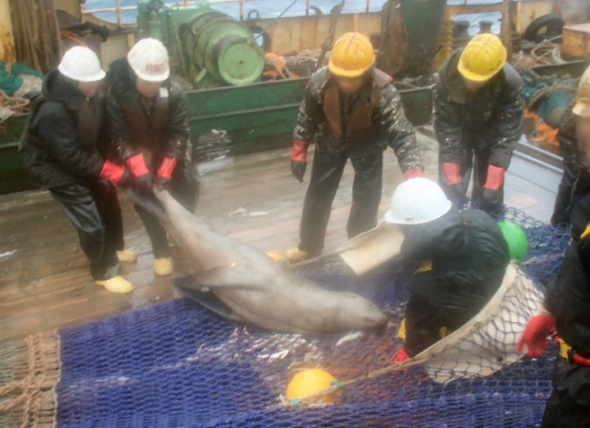
Image: Dead New Zealand Sea Lion in Fishing Net.
Since 2012 New Zealand conservationists, and the public community have been calling on the New Zealand government to do everything they possibly can to preserve this species. Unfortunately as you can see above fishermen are still accidentally killing the species off. As the species is protected under law and listed as endangered, the New Zealand government must take action against these perpetrators, otherwise extinction will most certainly occur.
The Maori people of New Zealand have traditionally hunted Sea Lions, presumably since first contact, as did Europeans upon their arrival much later. Commercial sealing in the early 19th century decimated the population in the Auckland Islands, but despite the depletion sealing continued until the mid-20th century when it was halted.
Commercial sealing in the early 19th century decimated the New Zealand Sea Lion population in the Auckland Islands, but despite the depletion sealing continued until the mid-20th century. The population has yet to fully recover from the period of over exploitation. At the present time, New Zealand Sea Lions have a highly restricted distribution, a small population, and nearly all of the breeding activity is concentrated in two subantarctic island groups. This restricted and small breeding population in combination makes them vulnerable to disease outbreaks, environmental change, and human activities.
The commercial Arrow Squid trawl fishery near the Auckland Islands reported their first New Zealand Sea Lion bycatch mortalities in 1978. Reported or estimated mortality between 1995 and 2007 averaged 92 animals annually (range 17-143) which was 3.7% of the estimated number of mature individuals in the Auckland Island area. Of particular concern is that most bycatch animals are females (up to 91%). New Zealand Sea Lions are also incidentally caught in other trawl fisheries around the Auckland and Campbell Islands.
Apart from direct mortality, competition and habitat modification caused by fishing activity may also be impacting New Zealand Sea Lion foraging areas. Epizootic outbreaks at the Auckland Islands in 1998, 2002, and 2003 led to more than 50%, 33%, and 21% early pup mortality respectively, and were also responsible for the deaths of some animals from other age classes during 1998.
The source of the suspected bacterial agent and cause of the outbreak and subsequent mortality for the 1998 outbreak are unknown, however the 2002 and 2003 outbreaks have been identified as being caused by Klebsiella pneumoniae.
The future of the New Zealand sea lion doesn’t look good at all. I highly suspect that we’re going to lose the species within 10-20 years (if that). More needs to be done to preserve the species habitat and its current fishing grounds as well as protecting from bacterial outbreaks. Failing this the species will be extinct within 10-20 years max. I am highly doubtful here, which is very rare for me to speak about.
Thank you for reading.
Dr Jose C. Depre. PhD. MEnvSc. BSc(Hons) Botany, PhD(NeuroSci) D.V.M.
Environmental, Botanical & Human Scientist.
Endangered Species Monday | Tasmanian Devil | Sarcophilus harrisii.
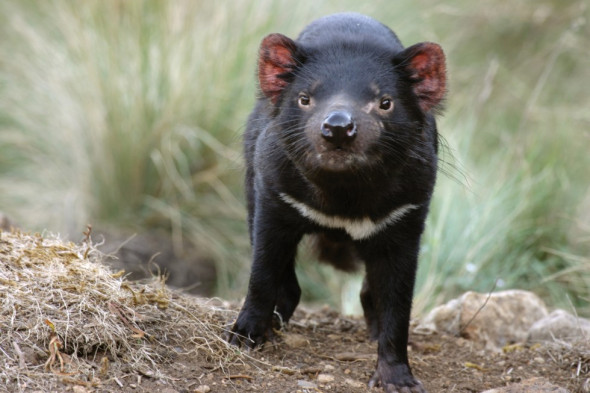
ENDANGERED SPECIES MONDAY | TASMANIAN DEVIL
This Mondays endangered species watch post (ESP) is dedicated to the Tasmanian devil, an endangered carnivorous marsupial that’s roughly the same size as a small domesticated canine. (Image credits: Bicheno Tasmania tourism)
The Tasmanian devil was formally identified back in 1841 by ‘French’ Dr Pierre Boitard (27 April 1787 Mâcon, Saône-et-Loire – 1859) whom was a French botanist and geologist. As well as describing and classifying the Tasmanian devil, he is notable for his fictional natural history Paris avant les hommes (Paris Before Man), published posthumously in 1861, which described a prehistoric ape-like human ancestor living in the region of Paris. He also wrote Curiosités d’histoire naturelle et astronomie amusante, Réalités fantastiques, Voyages dans les planètes, Manuel du naturaliste préparateur ou l’art d’empailler les animaux et de conserver les végétaux et les minéraux, and Manuel d’entomologie etc.
Listed as (endangered), and scientifically identified as Sarcophilus harrisii. Back in 1996 conservation scientists undertook further research on the species thus concluding the species was of ‘lower risk’. Unfortunately since 1996 - things have changed dramatically on the Australian continent. From the middle 1990’s conservationists estimated the mean mature individual total as being - 130,00-150,000 mature individuals.
Spotlighting sightings of Tasmanian devils across the state have declined significantly since the emergence of Devil Facial Tumour Disease (DFTD) in the mid-1990s: by 27% by early 2004, by 41% by early 2006, by 53% by early 2007, and by 64% by early 2008. The decline was significantly sharper in regions where DFTD had been reported earliest, such that in north-east Tasmania, mean sightings have declined by 95% from 1992-1995 to 2005-2007, with no indication of recovery or plateau in decline.
Comparison of mark-recapture results in the same area from the mid-1980s and 2007 supports this finding. At the Freycinet peninsula, on the east coast of Tasmania, where the population has been monitored through trapping from 1999 to the present, the population has declined by at least 60% since the disease was first detected in 2001 and the adult population still appears to be halving annually. Other indicators of devil abundance, such as road kills, predation on stock, and carrion removal, also support this conclusion of a substantial decline.
Surveys conducted back in 2007 ‘estimate the (mature) Tasmanian devil populations to be standing 25,000 being the highest estimate’; this equates to around 50,000 individuals. However back in 2004 conservationists stated the (mature populations) could be as low as 21,000 mature individuals. Conservationists have confirmed that due to the rapid spread of Devil Facial Tumor Disease, and other threats such as road accidents and predator kills - acknowledging these provisos, the best estimate of total population size based on current evidence thus lies within the range of 10,000-25,000 mature individuals. Based on threats, gestation, life span this therefore qualifies the species to be entered into [endangered category].
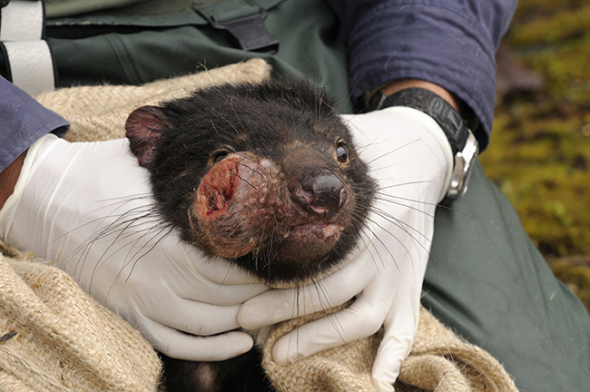
13 Feb 2011, Cradle Mountain-Lake St. Clair National Park, Tasmania, Australia — Tasmanian Devil (Sarcophilus harrisii) being treated by scientist for DFTD, Devil Facial Tumor Disease. This is a cancer that is spread by biting or physical contact from one animal to another, Cradle Mountain, Tasmania, Australia. — Image by © Dave Wattsl/Visuals Unlimited/Corbis.
In North-Western Australia Tasmanian devil populations are estimated to be standing at between (3,000-12,500 individuals). Meanwhile - in Eastern South Western Australia populations are said to be standing at 7,000 12,500 individuals.
Other trapping work by the Department of Primary Industry and Water (DPIW) Save the Tasmanian Devil Program broadly support these predictions for DFTD-free regions. However, in central and eastern regions, marked population declines have been detected, in association with the earlier reports of Devil Facial Tumour Disease (DFTD), subsequent to the time of the Jones and Rose survey. The north-west region is thus now thought to support the highest population densities.
The species is not known to be seriously or severely fragmented, however populations on the decline and fast, primarily due to Devil Facial Tumor Disease.
THREATS
Current evidence suggests that DFTD is an infectious, widespread disease, so that any attempt to delineate boundaries between affected and unaffected locations is likely to be outdated swiftly. DFTD has been associated with local population declines of up to 89% since first reported (Hawkins et al. 2006, McCallum et al. 2007), indicated by long-term spotlighting data, widespread trapping and laboratory results. The declines, and the prevalence of the disease, have not eased off in any monitoring sites, and DFTD is present even in very low density areas.
It is estimated that the adult population is approximately halving annually on the Freycinet peninsula with extinction predicted at this site 10-15 years after disease arrival. Declines were most marked in areas where the disease had been reported earliest, in north-eastern and central eastern Tasmania.
Mean spotlighting sightings of Tasmanian devils per 10 km route, obtained from across the core Tasmanian devil range (eastern and north-western Tasmania), have declined by 53% since the first report of DFTD-like symptoms in 1996. The most immediately threatened location is thought to be the region where DFTD was reported prior to 2003: across 15,000 km² of eastern Tasmania.
By 2005, the Devil Disease Project Team had confirmed DFTD in individuals found across 36,000 km² of eastern and central Tasmania. DFTD is now confirmed across more than 60% of the devil’s overall distribution, and there is evidence for continued geographical spread of the disease, so that Tasmanian devils across between 51% and 100% of Tasmania may be, or have already been, subject to >90% declines in a ten-year period. The currently affected region covers the majority of the formerly high-density eastern management unit, involving what was perhaps around 80% of the total population.
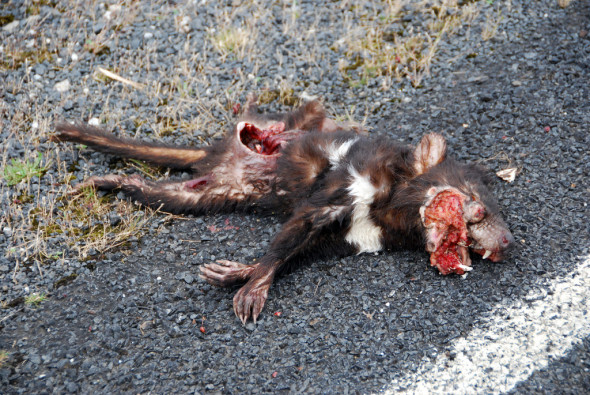
Image: Tasmanian devil killed by car/with suspected DFTD.
DTFD has resulted in the progressive loss of first the older adults from the population and then the younger adults so that populations are comprised of one and two year old’s. As female devils usually breed for the first time at age two, they may not successfully raise a litter before they die of DFTD. An increase in precocial breeding indicates some compensatory response, but as yet this appears to have been insufficient to counter mortality.
DFTD behaves like a frequency-dependent disease, probably because the majority of the injurious biting, which is the type of contact most likely to lead to disease transmission, occurs between adults during the mating season. Frequency-dependent diseases, which are typically sexually transmitted, can lead to extinction. Because transmission occurs between the sexes at mating irrespective of population density, these types of diseases lack a threshold density below which they become extinct.
Cannibalism is considered fairly common in Tasmanian devils and renders the species particularly vulnerable to disease transmission. However, modes of transmission of DFTD are not as yet known.
ROAD KILLS:
A recent three-year study of roadkill frequency on the main roads of Tasmania estimated 2,205 Tasmanian devils are killed on roads annually. This suggests that 2-3.% of the total Tasmanian devil population are killed on roads (based on an estimated population of 60,000–90,000 individuals at the time of the survey). The roaded parts of Tasmania closely match the core distribution area for Tasmanian devils.
Roadkill was attributed as the cause of up to 50% and 20% of Tasmanian devil death during a recording period of 17 months at Cradle Mountain and 12 months at Freycinet National Parks, respectively. Local extinction and a similar rate of population decline at Cradle Mountain indicates that roadkill can cause local extinction, in which the road becomes a local sink. Future impact is likely to remain at the same level.
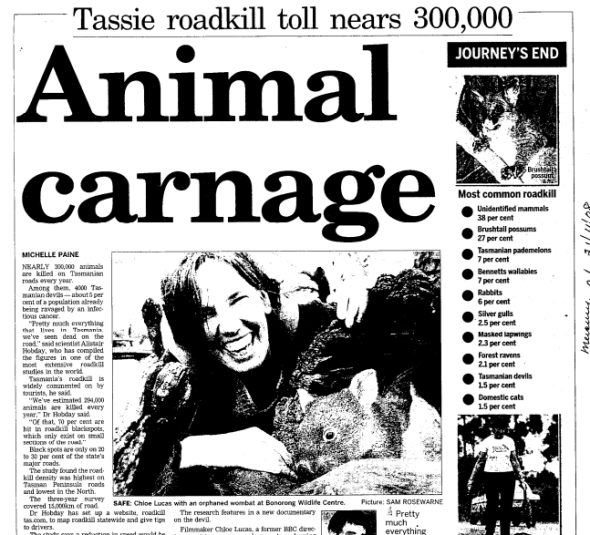
Image: Paper cutting relating to 3 year study of fauna road kill.
DOG KILLS:
Reports of about 50 devils killed per year by poorly controlled dogs are served from about 20 dog owners. There is no obligation or incentive for such reports, and generally some hesitance even among those providing them, so the real figures are more likely of the order of several hundred devils killed by dogs each year.
FOXES:
There have been spasmodic, small-scale introductions of the Red Fox (Vulpes vulpes) into Tasmania since early European colonisation. Early incursions were sometimes efforts at acclimatisation and others for short-term hunting. More recently, there has been at least one accidental incursion (from a container ship in 1998) and credible reports of a concerted, malicious campaign of introduction.
Hard evidence (confirmed scats, carcasses) of foxes has been found in the north-west and northern and southern midlands. Credible sighting reports have come from most of the eastern half of the State including the central highlands and the far north-west, mostly areas where Tasmanian devil populations are suppressed by DFTD.
A commonly held view has been that the abundance of Tasmanian devils has prevented fox establishment through interference competition, either aggressive exclusion or predation on denned juveniles. Red Foxes and Tasmanian devils share preferences for den sites and habitat, and are of a similar size. Tasmanian devils abundance is likely to slow, if not prevent, fox establishment.
It is possible that foxes have been present in Tasmania for many decades at sub-detectable levels, and that a degree of ecological release has occurred due to DFTD, with foxes increasing to detectable numbers. The current impact of the Red Fox has been quantified, and it is unlikely that fox numbers are currently at a level to impose a measurable impact.
A decline in Tasmanian devils number may create a short to medium-term surplus of food, for example carrion; ideal for fox establishment. Fox establishment may cause both direct and indirect effects on Tasmanian devils. Direct effects include (reciprocal) killing by then abundant foxes of then rare juvenile devils at dens while the female forages.
Fox establishment may also cause ecosystem disruptions through changes in other species - a feature of foxes on mainland Australia and something that might then also indirectly affect Tasmanian devils. Tasmania has the potential to hold up to 250,000 foxes (based on modelling of habitat preferences and densities in south-east mainland Australian) which could replace most medium- to large-sized marsupial carnivores.

Image: Red foxes have been reported to prey on Tasmanian devils/Other Marsupials.
PERSECUTION:
In the past, persecution of the Tasmanian devil has been very high throughout settled parts of Tasmania, and is thought to have brought about very low numbers at times. Through the 1980s and 1990s, systematic poisoning in many sheep-growing areas (particularly fine-wool with its reliance on merinos) was widespread and probably killed in excess of 5000 devils per year. In the 1990s, control permits were occasionally issued to individuals who were able to argue that Tasmanian devils were pests (e.g. killing valuable lambs).
Current persecution is much reduced, but can still be locally intense with in excess of 500 devils thought to be killed per year. However, this is reducing since devil numbers have declined. While the small amount of current persecution is likely to persist it is unlikely to constitute a major threat unless the Tasmanian devil population becomes extremely small and fragmented.
LOW GENETIC DIVERSITY:
Dr Jones in 2004 found the genetic diversity of Tasmanian devils to be low relative to many Australian marsupials as well as placental carnivores. This was consistent with an island founder effect, but previous marked reductions in population size may also have played a role. Low genetic diversity can reduce population viability, and resistance to disease.
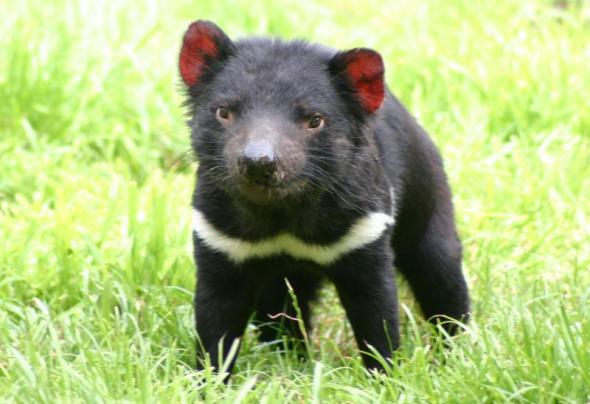
Image: Tasmanian devil (photographer unknown).
Tasmanian devils normally eat birds, snakes, fish, reptiles and insects. Furthermore its not uncommon to witness the species feasting on dead carrion. Female devils will mate with dominant males, who fight to gain their attention. Three weeks after conception, the females ‘can’ give birth to up to FIFTY BABIES, called joeys, although some reports state between 20-30 joeys. These extremely tiny joeys scramble to attach themselves to one of the four available teats in the mother’s pouch. Gestation is around 21 days.
For now the future is uncertain with regards to the Tasmanian devil. The species hosts a large number of natural threats, as well as roadkill accidents, human persecution and (DFTD). For now populations are considered to be generally high, although not that high for the species to qualify as vulnerable, or even near threatened. There are a number of Australian marsupials facing many threats, despite the continent being inhabited at some 10% by humans, or to be precise - 768,685 km2.
While I myself cannot state for certain what the future may hold for the Tasmanian devil - for now based on the large number of threats and continued population declines - its highly likely that come 2026 we’ll be seeing yet another Australian extinction occurring under our noses, and that is the sad reality of life from which our wildlife is facing today.
One thing is for sure though - never underestimate the DEVIL - they’re not called devils for nothing and have a rather cute temper too. Welcome to the planets largest carnivorousness marsupial. The Tasmanian devil
Thank you for reading.
Dr Jose C. Depre PhD. MEnvSc. BSc(Hons) Botany, PhD(NeuroSci) D.V.M.
Master Scientist of Environmental, Botanical & Human Science
Endangered Species Monday | Potorous gilbertii - Back From The Brink Of Extinction.
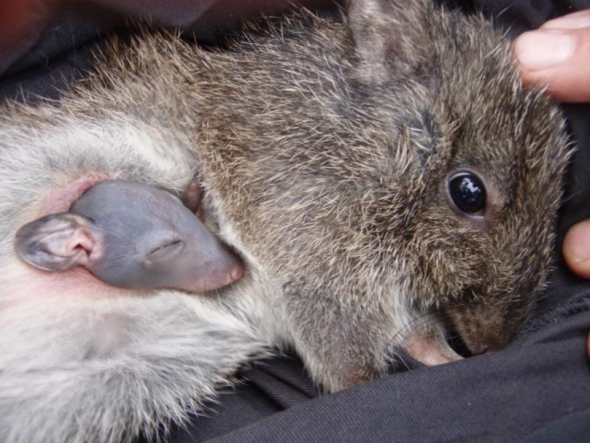
Endangered Species Monday | Potorous gilbertii
This Monday’s (ESP) post, I’ve decided to document a little more on Australia’s wildlife. This Monday I have dedicated this post to one of Australia’s most endangered marsupials. Commonly known as the Gilbert’s Potoroo. (Image Credit Parks and Wildlife Australia).
Identified as the worlds ‘rarest marsupial’, the species is scientifically known as the Potorous gilbertii. Listed as (critically endangered) the species was primarily identified back in 1841 by Dr John Gould FRS - 14 September 1804 – 3 February 1881) who was a British ornithologist and bird artist. He published a number of monographs on birds, illustrated by plates that he produced with the assistance of his wife, Elizabeth Gould, and several other artists including Edward Lear, Henry Constantine Richter, Joseph Wolf and William Matthew Hart.
Dr Gould has been considered the father of bird study in Australia and the Gould League in Australia is named after him. His identification of the birds now nicknamed “Darwin’s finches” played a role in the inception of Darwin’s theory of evolution by natural selection. Gould’s work is referenced in Charles Darwin’s book, On the Origin of Species.
Life hasn’t been at all easy for the P. gilbertii. It was only back in 2012 that conservation and environmental scientists (rediscovered) the species of which it was believed the marsupial had gone completely extinct within the wild. Endemic to Australia there is very little known in relation to when threats came about, increased and decreased. However I can state now; as small as populations are known - P. gilbertii’s populations are ‘currently stable within the wild’.
While though populations are stable, there are only thirty to forty actually known to be living within their endemic wild, so there is still a large amount of concern for the worlds most endangered marsupial. Back in early 1980’s the species had been listed as (completely extinct within the wild after studies from the 1800’s turned up nothing). Fortunately though environmental scientists went on the prowl and were not under any circumstances ready to write this species off whatsoever. They were technically looking for an animal that hadn’t been seen since the 1880’s-1990’s. Their work though eventually paid off.
“THEN CAME A BREAK THROUGH IN 1994”
Environmental scientists come 1992-1993 were ready to write the species off, call off all explorations and projects that were aimed at hopefully rediscovering the species. Fortunately though the Australian Parks and Wildlife Service persisted - and come 1994 a spotting was recorded. After so many years believing the Gilbert’s Potoroo had gone extinct, scientists discovered an extremely small population - to the joy of many. Finally there was hope, and today the species remains under full governmental protection.
Native to South-western and Western Australia the remaining populations was taken by three collectors between 1840 and 1879 in the vicinity of King George’s Sound (Albany), but exact locations are unknown. Skeletal material is common in cave deposits between Cape Leeuwin and Cape Naturaliste. Sub-fossil skeletal specimens have been located in coastal sand dunes between these localities. It is currently restricted to Mt. Gardner promontory in Two Peoples Bay Nature Reserve.
The entire population (consisting of 30-40 mature individuals) as explained above remains inhabits the Two Peoples Bay Nature Reserve of which they enjoy protection from the local parks wildlife board. While populations are identified as extremely small, mother will give birth to either 1-2 babies every year, normally its 2 babies. Like kangaroos the species has the ability to keep a second embryo in a state of diapause while the first embryo is growing. If the first baby does not go to term, a second baby starts growing right away.
Check out the Gilbert’s Potoroo Action Group by clicking this link
Diapause is considered a rare phenomena - especially in kangaroos, although its been witnessed quite a lot over the past few years by European, British and Australian Zoologists. The last diapause event (that I’m aware of) was witnessed at the Taronga Zoological Gardens in Australia. You can read the story >here.< The gestation period for Gilbert’s potoroo is unknown, but is estimated to be similar to the long-nosed potoroo at 38 days.
Since so few are alive today, much of the reproductive cycle for Gilbert’s potoroo remains unknown. However, the main breeding period is thought to be November–December with similar breeding patterns to those of the long-nosed potoroo. Scientists have tried to breed them in captivity, but recent attempts have been unsuccessful, citing diet, incompatibility, and age as possible factors that influenced the lack of reproduction. Reproduction in the wild is thought to be progressing successfully as many females found in the wild are with young.
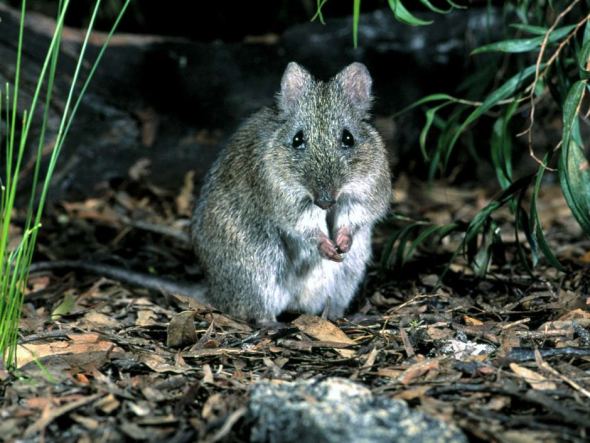
Image: Gilbert’s Potoroo. Photographer Mr Dick Walker.
In 2001, the Gilbert’s Potoroo Action Group was formed to help in the education and public awareness of the potoroo. The group also helps with raising funds for the research and captive-breeding programs for Gilbert’s potoroo. In efforts to protect the remaining population, three Gilbert’s potoroos (one male and two females) were moved to Bald Island in August 2005, where they are free from predation. Since that time, an additional four potoroos have been sent to establish a breeding colony.
THREATS
Fire is the critical threat (present and future) to this species as the Mt. Gardner population is in an area of long unburnt and extremely fire prone vegetation, and a single fire event could potentially wipe out the species (except for the few individuals in captivity and on Bald Island). This species is in the prey size range of both feral cats and foxes, and both are known to exist in the Two Peoples Bay area, thus this species is likely threatened by these predators.
Maxwell et al. (1996) states that the reasons for the decline of the species are unknown. Predation by foxes has probably been significant. Changed fire regimes may have altered habitat and/or exacerbated fox and cat predation by destroying dense cover. Gilbert’s notes record it as “the constant companion” of Quokkas, Setonix brachyurus
Unlike Gilbert’s Potoroo, the Quokka, although declining, persists over much of its pre-settlement range. The difference has not been explained. Maxwell et al. (1996) and Courtenay and Friend (2004), suggest that dieback disease caused by Phytophthora cinnamomi threatens persisting populations by eliminating plant symbionts of hypogeal, mycorrhizal fungi which are the principal food of Gilbert’s Potoroos. Altering vegetation structure and eliminating plants that provide food are direct threats to this species.
For now and based on various accounts, research and up to data documentaries. The species is still in danger. As explained above a single large and sporadic fire within the species habitat - could kill off the entire identified populations, which would be a catastrophe. While there is minimal threat from predators such as foxes and feral cats - this could change. So the need for persistent monitoring is a must. Finally we have disease, with populations being so small at around 30-40, any single disease could like fires wipe the entire species out within a single week.
Within the article above I’ve included various links for your immediate attention and information, as well as a link to the main working group that is helping (and doing all they can) to preserve the species. Furthermore I’ve included a donation link for you to donate to the Gilbert’s Potoroo Action Group. While I’m not entirely sure whether you can volunteer, there is a link on the main website below (highlighted: Volunteer Today). Just click the link, follow the instructions and, I’m confident someone will get back to you as soon as possible.
Volunteer Today
Thank you for reading, please don’t forget after reading to share this article, and hit the like button too.
Dr Jose Carlos Depre Depre PhD. MEnvSc. BSc(Hons) Botany, PhD(NeuroSci) D.V.M.
Environmental & Human Science
Endangered Species Friday: Macrotis lagotis | Bandicoot.
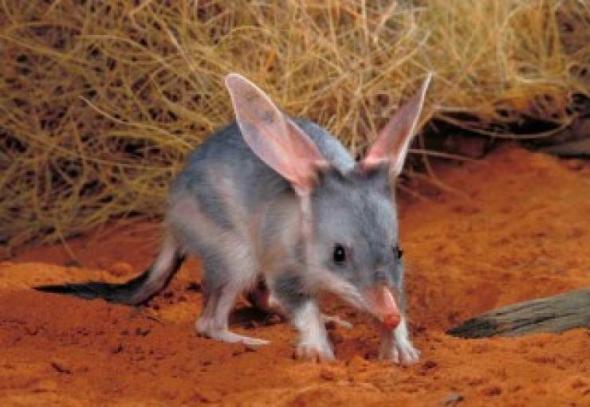
Endangered Species Friday | Macrotis lagotis
This Fridays (ESP) [Endangered Species Post] I touch up on the Macrotis lagotis, commonly known as the Rabbit-eared Bandicoot identified back in 1837 By Dr Reid. (Image credit unknown, explorer unknown).
The Rabbit Eared Bandicoot is the fifth Australian marsupial that I’ve documented on since establishing the (Endangered Species watch Post), covering now over 403 species of animals (worldwide) in exactly 5 years. From 1965 very little was actually known about the Rabbit Eared Bandicoot, despite the fact it was formally identified way back in the 1800’s.
Unfortunately when scientists eventually managed to re-locate the species, they found the animal was in fact nearing extinction within its endemic wild. Listed then as (ENDANGERED) the species almost went extinct from the 1980’s - 1900’s. Fortunately environmental scientists worked hard to preserve this rather unusual animal. From 1990 the species was still listed as (endangered - and nearing complete extinction within the Australian wild).
Fortunately from 1994-1996 species recovery programs increased populations within the wild. Come 1996 the species was re-listed as (vulnerable). Commonly known as the ‘bilby’, M. lagotis once inhabited some 70% of Australia. Wild populations are now restricted predominantly to the Tanami Desert (Northern Territory), the Gibson and the Great Sandy Deserts (Western Australia), and one outlying population between Boulia and Birdsville (south-west Queensland). The bilby has gone extinct from portions of southern Queensland within the last few decades.
However despite numerous conservation actions that have been aiding and increasing bilby populations, they are now on the decrease; slowly, but surely, for how long though is another story. Endemic to Australia (Northern Territory, Queensland, and Western Australia) its believed there are no fewer than 500 individuals on Thistle Island, 500 in Arid Recovery, 100 in Venus Bay, 200 in Peron, 40 in Scotia, 200-500 in Queensland.
There are fewer than 1,000 individuals in the Northern Territory and 5,000-10,000 in non-reintroduced Western Australia. The global population might be under 10,000 individuals. The species is wide-ranging and patchily distributed. The population estimates of bilbies in the Northern Territory and Western Australia are very approximate, as there are no published numbers in peer-reviewed journals. It is known from aerial surveys that bilby signs (diggings) in the areas where bilbies are persistent occur less than 15 to 20 km apart.
“TEN THOUSAND INDIVIDUALS REMAINING”
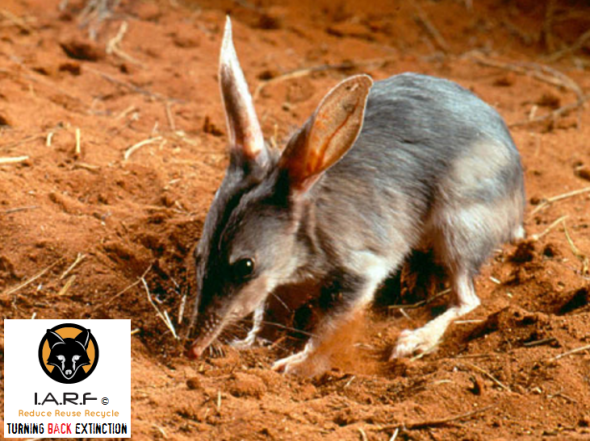
Image: Bilby, Australia. Photographer unknown.
Bilby populations are not known to be seriously fragmented, and from what I am aware the species is protected under CITES APPENDIX I (Convention on International Trade in Endangered Species of wild Fauna and Flora).
“WHAT’S WITH THE LARGE EARS?”
You’ll find that many small and even large animals that live within extremely arid and hot countries, and are active during the daytime will host large fan like ears. Without these large cooling like rabbit ears many species of animals wouldn’t be able to radiate heat away from its most important organs - being the brain. Smaller ears would most certainly result in the mammal dying from massive heat stroke, and dehydration. However due to the lack of research on the bilby, we still don’t know for sure if these massive ears do indeed help keep the species cool.
Bilby ears are almost naked, which ‘may be for temperature regulation’, but because the research hasn’t been done we don’t actually know for sure. One thing that scientists studying bilbies do agree on is the variability in behavior between bilby populations living in different conditions around Australia. They’ve adopted different diets, burrows, breeding habits and social networks, and this adaptability has been the key to their survival.
THREATS
The current bilby distribution is associated with a low abundance or absence of foxes, rabbits, and livestock. Major threats relate to predation from foxes, habitat destruction from introduced herbivores, and changed fire regimes. Predation pressures “from feral cats” and dingoes occurring in association with pastoral practices may be a threat to the bilby. Feral cats have affected the success of reintroduced populations. Additional threats to the bilby include mining and other development, and road mortality.
BILBY FACTS
When: Bilbies are opportunistic breeders waiting until conditions are good, rather than particular seasons.
Where: In the wild, bilbies are now limited to patches of the northern desert areas of NT and WA. and a tiny isolated remnant population in SW QLD. They are also found in sanctuaries and breeding colonies in WA, NSW, SA and QLD.
Other info: The name bilby comes from the Yuwaalaraay people of northern NSW. They are important in Aboriginal culture and were a common food resource. Bilbies live up to 7 years in the wild and 11 years in captivity. They are considered endangered.
WHAT DO BILBIES EAT?
Bilbies are omnivores and eat insects, seeds, bulbs, fruit and fungi. Most food is found by digging in the soil. Big ears quickly detect insect prey, which they catch with their long tongue.
Thank you for reading.
Every Monday and Friday I.A.R.F publishes in the last (6 months of each year) an Endangered Species Post. Furthermore every Wednesday I.A.R.F also publishes investigative articles relating to wildlife, environmental and animal concerns. For more information please subscribe to our news feed for free here www.speakupforthevoiceless.org
Dr Jose C. Depre PhD. MEnvSc. BSc(Hons) Botany, PhD(NeuroSci) D.V.M. Environmental & Human Science.
Endangered Species Monday: Papustyla pulcherrima | Special Report.
Endangered Species Monday: Papustyla pulcherrima
Manus Green Tree Snail - Very first invertebrate to be listed on the Endangered Species Act of the United States of America (2015) Endangered Species Post Special Report.
This Monday’s Endangered Species Post (ESP) I take a wee glimpse into the life of the Green Tree Snail, also commonly known by Papua New Guinea’s natives as the Manus Green Tree Snail. Image Credit: Stephen J. Richards.
Identified by Professor Rensch 1931, Rensch was born on the 21st January 1900 in Thale in Harz and died on the 4th April 1990 in Münster, (Germany), Professor Rensch was an evolutionary biologist, zoologist, ethologist, neurophysiologist and philosopher and co-founder of the synthetic theory of evolution. He was professor of Zoology and Director of the Zoological Institute at the Westphalian Wilhelms University in Münster. Together with his wife Mme Ilse Rensch he also worked in the field of Malacology and described several new species and subspecies of land snails.
The Manus Green Tree Snail is identified as Papustyla pulcherrima commonly known as the Emerald Green Snail. From 1983-1994 this particular species of snail was considered (extremely rare). Back in 1996 when scientists managed to again finally catch up with this stunning little mollusk, the species was then listed as (data deficient) of which to date there remains little information about this (rare) but beautiful snail.
P. pulcherrima is endemic to the Papa New Guinea northern island of Manus of which the species is listed as (near threatened), and has also been reported on the adjacent Los Negros Island. Environmental scientists have confirmed from villagers on the main Manus Island that the species is not located anywhere else. However there are some sketchy reports that the species “may be located on surrounding islands”, however there is no evidence to back these claims up.
Environmental scientists have confirmed for now that the species is located in only 12-13 areas of the Manus Island[s]. Further reports have confirmed that mature individuals are on the decline (which if not controlled could evidently see the species re-listed as vulnerable or endangered). The Manus Green Tree Snail is not believed to be living within fragmented zones. The species is restricted to forest and low intensity garden ‘type’ habitat. Declines have been noted within all 12-13 identified habitats on the Manus Island and adjacent Los Negros Islands. Population history is pretty much undocumented although has been shown to be slowly declining.
Image: Manus Green Tree Snail.
Back in 1930 when Professor Rensch identified the Manus Green Tree Snail, locals soon began collecting the species for trade thus seeing the mollusk now nearing endangered listing. Demand for the Manus Green Tree Snail has now drastically increased threatening the species furthermore. Locals continue to collect this rather unusual colored species shell for use within the jewelry trade. There are now “very serious concerns” that trade may eventually push the species into extinction.
Due to mass trade exploitation the Manus Green Tree Snail is the very first invertebrate to be listed on the Endangered Species Act of the United States of America. International trade has been controlled by export permit since 1975 under the Convention on International Trade in Endangered Species of Wild Fauna and Flora (CITES) appendix II. Unfortunately this is not stopping locals from harvesting the species, and trade is still continuing despite it now a criminal offence under United States and some international laws.
“Overexploitation threatens the Manus Snail”
Market sales data collected from the Lorengau market, over a six day period suggest that annual sales at the market may approach 5,000 shells. Investigations by the Wildlife Conservation Society (WCS) reveal that large quantities of shells are still being attempted to be exported out of the country. Online searches revealed the sale of the shells, often marketed as antiques, occurring in open forums and internet market places based in New Zealand, Australia, and the United States of America (USA). International Animal Rescue Foundation has ran numerous traces online of which located yet again Ebay as being a number one trading site of the “threatened species”, please view the image below and click the image link that’ll direct you to that site.
“EBAY JAPAN IS A HOTBED FOR ILLEGAL TRADE OF THE MANUS GREEN SNAIL”
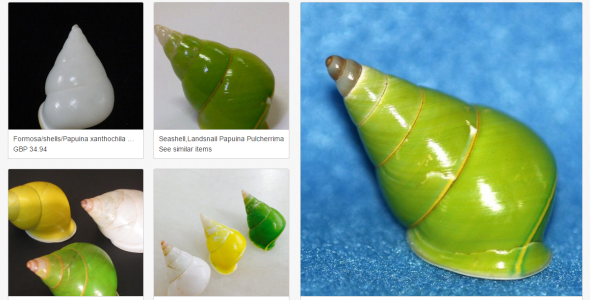
International Animal Rescue Foundation’s External Affairs Department and the Environmental Cyber Crimes Unit located many a sites trading the Manus Green Tree Snail’s shell which is illegal under some trade law, unfortunately the Ebay site listed above, located within Japan is one of many more that are trading (despite the species nearing extinction).
I.A.R.F’s Environmental Cyber Crimes Unit have since filed a complaint with Ebay, providing all the relevant data to now remove these species from their sites, however its likely to prove negative as the trader could very well state they harvested or purchased the shells before international laws were drafted. Furthermore a trace of the owner that owns this site above which is in violation of the United States and Cites laws (is located within the United States). So in regards to enforcement, breaking this link is going to be somewhat of a tough cookie. Further trade was witnessed here via what we can only believe is alleged “antiques”.
Further trade all of which is illegal has been recorded hereto - this site linked back to a Mr Rob West of 121 Henderson Road, Sheldon, Brisbane, Queensland 4157 Australia, Telephone: 610732061636. Mr West from Brisbane categorically states that he doesn’t own a shop, and is a one man band, yet clearly this link states otherwise. Further evidence revealed antique trade conducted on the Ebay site, see in the image below (illegal under United States law).
Click the image link below to view more.

“Illegal to trade under the Endangered Species Act of the United States of America”
The environmental wildlife crimes investigation team linked to TRAFFIC and Cites stated:
It is possible the avoidance of conventional nomenclature is an attempt to avoid detection by authorities. In some cases, sellers on internet market places were based in CITES signatory countries (including: Australia, Italy, New Zealand, Singapore and USA) while others were not (e.g. Taiwan). Currently, volumes of shells on sale in such online market places appear low, suggesting that the existing controls on international trade maybe adequate. However, given that the online prices of shells were often orders of magnitude greater than market prices on Manus Island, vigilance will be required to insure that illegal international demand does not fuel a resurgence in snail collection.
Despite the massive trade on Manus Green Tree Snails online and within open Asian markets, its literally impossible to determine if this trade will eventually lead to the species being pushed into extinction. However it MUST be noted that there are currently only 12-13 identified habitats that the snail currently inhabits. And based on traces online conducted by the I.A.R.F’s External Affairs Department - trade is most certainly “out of control”, and not as Cites has reported (2012).
The shell of this species is a vivid green color, which is unusual in snails. The green color is however not within the solid, calcium carbonate part of the shell but instead it is a very thin protein layer known as the periostracum. Under the periostracum the shell is yellow.
MAJOR THREATS
The Manus Green Tree Snail is mostly threatened by habitat destruction through forest clearance: logging, plantation development (especially rubber) and to a lesser extent road developments. Increasing human population growth and an increasing cultural demand for deriving cash incomes from the land will likely see the rate of forest degradation increase in the future. Harvest occurs when trees are felled as part of traditional shifting cultivation and the snails, typically found in the canopy, suddenly become exposed. Such harvesting is not uncommon but it is likely to be of lower significance than the longer term habitat degradation caused by such agricultural practices.
While harvest for illicit international trade is occurring, the volumes are not “allegedly” thought to be large compared to historic rates, although they may approach levels seen in the legal domestic trade. However, given that the prices of shells internationally are often orders of magnitude greater than market prices on Manus Island, vigilance will be required to insure that illegal international demand does not fuel a resurgence in snail collection.
Notable deposits of gold have been found in central Manus and a mine operation will likely result in the next decade although no details of the plan have been released (as of 2014). The forests of Manus Island were badly affected by the 1997-1998 El Niño which resulted in a prolonged drought. Should climatic change result in increased rates of similar conditions this may constitute a future threat to the snail species, however, current predictions suggest that future incidence of drought in Papua New Guinea will decrease (Australian Bureau of Metrology and CSIRO 2011).
Despite the reassurances from Cites, WCS and the local wildlife organisations - evidence clearly points to large scale online trade legal and illegal. Furthermore there is no telling if shells online are antique or smuggled from the Manus Islands which is very concerning.
Manus Green Tree Snail is the first such snail to be listed on the threatened list of endangered species (USA). Research also explains to us that its likely the species will be plundered into extinction - very soon. Enjoy the video.
Thank you for reading, and please be most kind to share to create awareness and education.
Dr Jose C. Depre PhD. MEnvSc. BSc(Hons) Botany, PhD(NeuroSci) D.V.M.
Environmental & Human Science
Donate by clicking the link below:
https://www.facebook.com/Anti-Pet-and-Bush-Meat-Coalition-474749102678817/app/117708921611213/
Sign up here to our A.P.B.M.C news feed below here:
https://www.facebook.com/Anti-Pet-and-Bush-Meat-Coalition-474749102678817/app/100265896690345/
Follow me on Twitter here:
https://twitter.com/josedepre11
Sources:
IUCN, WWF, CITES, WCS, Ebay, Wikipedia, Australian Bureau of Metrology and CSIRO
Endangered Species Friday: Diomedea amsterdamensis - An Ocean of Grief.
Endangered Species Friday: Diomedea amsterdamensis
This Friday’s (ESP) Endangered Species watch Post I dedicate to one of the most stunning and adorable of all plane like birds. Listed as [critically endangered] and identified back in 1983 by South African Dr Jean Paul Roux whom is a Marine Biologist studying Zoology, Systems Biology and Marine Biology at the University of Cape Town, South Africa Jean Paul Roux works full-time at the Department of Biological Sciences, Cape Town. (Image D. amsterdamensis fledglings)
(Image: Birdingblogs.com)
Commonly identified as the Amsterdam Albatross or Amsterdam Island Albatross the species was listed as [critically endangered] back in 2012. This gorgeous bird is endemic to the French Southern Territories of which its populations are continuing to decline at a rapid pace. Populations were estimated at a mere 170 individuals which in turn ranks as the worlds most endangered species of bird. Out of the 170 individuals there are a total of 80 mature individuals consisting of 26 pairs that breed annually.
Between 2001-2007 there were a total of 24-31 breeding pairs annually, which leaves a slightly lower population count today of around 100 mature individuals. Back in 1998 scientists stated that there were no fewer than 50 mature individuals if that. The Amsterdam Albatross doesn’t naturally have a small population however qualified for the category of [critically endangered] due to this reason when identified in 1983. Furthermore pollution, habitat destruction and disease remain pivotal factors that’s decreasing populations furthermore. The video below from MidWay island explains a little more about pollution and birds of this caliber.
Its quite possible that there could be more unidentified groups within the local territory or elsewhere, unfortunately as yet there is no evidence to suggest the Amsterdam Albatross is located anywhere else, however there have been sightings, which do not necessarily count as the species being endemic to countries the bird may have been noted within.
The species breeds on the Plateau des Tourbières on Amsterdam Island (French Southern Territories) in the southern Indian Ocean. An increase of populations was documented via census back in 1984, a year after identification. Marine Biologists have stated that population sizes may have been more larger when its range was more extensive over the slopes of the island.
Meanwhile in South Africa satellite tracking data has indicated the Amsterdam Albatross ranges off the coast of Eastern South Africa to the South of Western Australia in non-breeding pairs. There have been some [possible] sightings over Australia through to New Zealand too. Meanwhile South Africa “may” have its first breeding pair this must not be taken as factual though. Back in 2013 a nature photographer photographed an Amsterdam Albatross off the Western Cape of South Africa which is the very first documented and confirmed sighting [2013].
AN OCEAN OF GRIEF
Breeding is biennial (when successful) and is restricted to the central plateau of the island at 500-600 m, where only one breeding group is known. Pair-bonds are lifelong, and breeding begins in February. Most eggs are laid from late February to March, and chicks fledge in January to February the following year.
Immature birds begin to return to breeding colonies between four and seven years after fledging but do not begin to breed until they are nine years of age. The Amsterdam Albatross exact diet is unknown, but probably consists of fish, squid and crustaceans. During the breeding season, birds forage both around Amsterdam Island and up to 2,200 km away in subtropical waters which is something of interest. During the great Sardine Run many aquatic species consisting of birds, seals, sharks and whales hit the South African oceans hard for sardines. So I am calling on my fellow South African friends to please be on the lookout for this rather elusive bird.
Read more here on the Avian Biology.
Image: Amsterdam Albatross mating ritual, credited to Andrew Rouse.
Diomedea amsterdamensis, is quite a large albatross. When described in 1983, the species was thought by some researchers to be a sub-species of the wandering albatross, D. exulans. Bird Life International and the IOC recognize it as a species, James Clements does not, and the SACC has a proposal on the table to split the species. Please refer to the link above on Avian Biology which will explain more on the bird and its current classification.
More recently, mitchondrial DNA comparisons between the Amsterdam albatross, the wandering albatross Diomedea exulans, the Antipodean albatross D. antipodensis and the Tristan albatross D. dabbenena, provide clear genetic evidence that the Amsterdam albatross is a separate species.
Threats
Degradation of breeding sites by introduced cattle has decreased the species’s range and population across the island. Human disturbance is presumably also to blame. Introduced predators are a major threat, particularly feral cats. Interactions with longline fisheries around the island in the 1970s and early 1980s could also have contributed to a decline in the population.
Today the population is threatened primarily by the potential spread of diseases (avian cholera and Erysipelothrix rhusiopathiae) that affect the Indian Yellow-nosed Albatross Thalassarche carteri population 3 km from the colony. Infection risks are very high and increased chick mortality over recent years suggests the population is already affected.
The foraging range of the species overlaps with longline fishing operations targeting tropical tuna species, so bycatch may also still be a threat, and a recent analysis has suggested that bycatch levels exceeding six individuals per year would be enough to cause a potentially irreversible population decline. Having a distribution on relatively low-lying islands, this species is potentially susceptible to climate change through sea-level rise and shifts in suitable climatic conditions. Plastic pollution has also been noted as problematic.
International Animal Rescue Foundation Africa and International Animal Rescue Foundation France are currently working on projects to reduce more plastic within bird habitat that has never been visited by the organisation before. The current plight of bird habitat and plastic pollution within the Pacific ocean needs to be worked on by everyone, furthermore addressed immediately.
To date all twenty two species within the four genera of Albatross are heavily threatened with extinction. There remains no species at present that is listed as [least concern]. The future is indeed very bleak for all 22 species and something we now need to work on and towards to preserve Albatross’s before extinction occurs within a decade for the vast majority of all twenty two species and sub-species.
Thank you for reading.
Please share to make aware the plight of this stunning bird and the remaining twenty two species too.
Dr Jose C. Depre.
Botanical and Environmental Scientist.
A planet without birds is a world not worth living within anymore. Daily I am traumatized and deeply disturbed at viewing the destruction we have caused to these stunning animals and, their natural habitat. I am pained, deeply frustrated and infuriated at international retail companies whom preach good yet practice negligence killing off via plastic pollution our species of birds. Jose Depre
Endangered Species Monday: Dasyurus maculatus
Endangered Species Monday: Dasyurus maculatus
This Mondays Endangered Species Watch Post (ESP) I focus a little attention onto the Spotted-tailed Quoll. D. maculatus was identified back in 1792 by Dr Robert Kerr (1755 – 11 October 1813) Dr Kerr was a scientific writer and translator from Scotland. Dr Kerr was born in Roxburghshire as the son of a jeweler. He studied medicine at the University of Edinburgh and practiced at the Edinburgh Foundling Hospital as a surgeon. (Image adult Quoll)
Dr Kerr translated several scientific works into English, such as Antoine Lavoisier’s work of 1789, In 1792, he published The Animal Kingdom, the first two volumes of a four-tome translation of Professor Linnaeus’ Systema Naturae, which is often cited as the taxonomic authority for a great many species. (He never did start the remaining two volumes.) Please note, the Spotted-tailed Quoll is described as ‘two subspecies’ and will be noted as such during this short article.
Listed as near threatened, D. maculatus has been wrongly named by some writers as the ‘Tiger Quoll’. The species shows no resemblance to that of a Tiger nor shows any familiar behavioral traits too. There is no mention of a ‘Tiger Quoll’ within conservation literature too. So I wish to put that name to bed now.
From 1996 the species [and sub-species] was listed as vulnerable, a further 2008 evaluation of the carnivorous marsupial saw conservation NGO’s submit data to the Red List of which the Spotted-tailed Quoll now qualifies for the criteria of (near threatened). Endemic to the island of Australia the species exists as explained as two sub-species.
Sub species (1) Dasyurus maculatus maculatus was formerly distributed in south-eastern Queensland (as far north as Bundaberg and as far west as Chinchilla), eastern New South Wales, Victoria, South Australia, Tasmania (including some of the Bass Strait Islands. Maxwell et al. (1996) reported that in south-east Queensland this particular sub-species has undergone a range contraction indicated to be in excess of 30% over the last 25 years and is now rare in most areas.
Sub species (2) D. m. gracilis formerly occurred throughout the latitudinal range of the Wet Tropics World Heritage Area of north Queensland. It is now apparently extinct from the Atherton and Evelyn Tablelands, and there are few sightings south of 17o45’S. This represents a decline in extent of occurrence of approximately 20%.
Populations are decreasing of which there remains an estimated ‘20,000’ mature individuals. Populations in south-east Queensland, western Victoria (Otways and far south-west of Victoria), and coastal areas of southern New South Wales are known to be declining too. Populations in north-eastern Queensland are small, fragmented, and are <1,000 individuals. Tasmanian population numbers appear to be stable.
There is some evidence of a decline in distribution or in numbers in remaining suitable habitat (e.g., in the Otway Range), and the species is mostly uncommon (although it is present in good numbers in some areas, such as the Marengo and Chaelundi Forests).
Image: Spotted-tailed Quoll (juvenile)
Threats
The reasons for decline of D. m. maculatus are a combination of habitat loss and fragmentation, possible disease at the beginning of the 20th century, competition with foxes and feral cats, predation by foxes and dogs, and impact of widespread strychnine baiting for dingoes.
Most recently threats include non-target mortality from trapping and poisoning (there is a long-standing concern that Quolls are being killed by the use of 1080 poisoning, but this has not been confirmed and is currently the focus of a number of investigative trials).
Direct persecution is significant as they are attracted to caged birds and do not necessarily take flight when discovered. Estimated forest loss as a result of clearing within its former range in south-east Queensland is over 70%, with the majority of loss occurring over the last 20 years.
The species uses a large number of den sites throughout the year and activities that reduce the number of den logs are likely to be significant. In Tasmania this taxon is naturally rare, possibly as a result of competition with D. viverrinus, Sarcophilus harrisii, and feral cats. Road mortality could be a significant factor where high speed roads and good habitat coincide, as Quolls are attracted to feed on the carcasses of road-killed animals.
D. m. gracilis is susceptible to factors which increase juvenile and/or adult mortality, or which otherwise decrease breeding success. Such factors may include habitat clearance, logging, introduced species including cane toad, and direct killing at chicken pens, at houses, and on roads.
Conservation actions are underway with more planned soon that will work to evaluate the current species size, habitat loss, food sources and protective areas needed Etc.
Spotted-tailed Quolls are generally nocturnal and rest during the day in dens. However, juveniles and females with young in the den can be seen during the day and may leave their dens when it is light out. Quoll dens take the form of underground burrows, caves, rock crevices, tree hollows, hollow logs, or under houses or sheds. Quolls move by walking and bounding gaits. Trails are not particularly important for Quoll, although they forage and scent mark along runways and roads.
Facts
Size of the Quoll depends on the species. They can reach 14 to 29.5 inches in length and 3 to 15.4 pounds of weight.
Quoll is covered with coarse coat that can be grey, brown or black in color. Basic color of the fur is enriched with prominent white spots. Quoll has pointed snout and pink nose. Its powerful jaw is equipped with sharp teeth. Tail is long and bushy. Quoll has sharp claws on the front and hind feet that are used for holding the food, climbing and digging underground burrows.
Quolls are nocturnal animals (active during the night). Even though Quolls are agile climbers, they spend majority of their life on the ground. Quolls can consume both animals and plants. Diet is mainly based on small mammals (such as rabbits), small birds, snakes and insects. They occasionally eat fruit and nuts.
Main predators of Quolls are crocodiles and snakes. Quolls live in the underground burrows, inside the hollow trees or caves. Quoll is territorial animal.
Male’s territory overlaps with territories of several nearby females. They share communal latrines. Quoll is solitary creature which gathers with other Quolls only during the mating season.
Mating season of Quolls takes place during the winter. Pregnancy lasts only couple of weeks and ends with up to 30 miniature babies (they weigh less than one gram).
Babies spend first 8 weeks of their life inside the mother’s pouch. After that period, babies are big enough to leave the pouch and ride on the mother’s back. Young Quolls are ready for independent life at the age of 6 months. Female’ pouch is not a true pouch. It forms out of the fold of skin on the stomach after successful mating. Pouch contains only 6 teats, which means that only 6 babies out of 30 will be able to survive and complete their development. Quolls reach sexual maturity at the age of one year. Quolls have short lifespan. They can survive from 2 to 5 years in the wild, depending on the species.
Contrary to popular belief Quolls or as some people refer to this documented species as the ‘Tiger Quoll’ are not rare. The species and entire genera are in fact nocturnal, so while your asleep they’ll most likely be happily wondering through your garden or local parks and nature reserves. However the species is threatened and decreasing with a population size of some 20,000.
Thank you for reading.
Dr Jose Depre.
Don’t forget to check out the upcoming Embassy Day hosted by SAYNOTODOGMEAT.NET please click the link here below further information > http://saynotodogmeatevents.info/2015/07/26/embassy-day-september-17th-2015/
Endangered Species Friday - Bos javanicus
Endangered Species Friday - Bos javanicus
“Thus, the hunting is the proximate cause of decline”
Hunters often demand that we prove to them such a sport or just hunting for food say hasn’t ever pushed a species into nearing extinction or extinction within the wild. The Bos javanicus is under threat from hunters and poachers. (image above - female Banteng)
This Friday’s endangered species article we focus our attention on the Banteng as its commonly known identified back in 1823 by Dr Joseph Wilhelm Eduard d’Alton (August 11, 1772 – May 11, 1840). Mr d’Alton was a German engraver and naturalist who was a native of Aquileia (today part of Italy). He was the father of anatomist Johann Samuel Eduard d’Alton (1803–1854).
He studied in Vienna, and later worked in several locations, including Weimar and Jena. Afterwards he moved to Würzburg, where he worked with embryologist Christian Heinrich Pander (1794–1865). He later taught art history and architectural theory at the University of Bonn, where in 1827 he became a “full professor” of art history. From 1831 to 1840, d’Alton was a member of the Prussian Academy of Arts. One of his famous students in Bonn was Karl Marx. ~Wiki.
The Banteng is listed as (endangered) and is endemic to the countries of Cambodia, Indonesia (Bali, Jawa, Kalimantan), Lao People’s Democratic Republic, Malaysia (Peninsular Malaysia - Regionally Extinct, Sabah), Myanmar, Thailand and lastly Viet Nam.
Unfortunately the species is now known to be “regionally extinct” within the countries of Bangladesh, Brunei Darussalam and India. From 1986 to 1994 the species was listed only as (vulnerable) however, due to mass deforestation, poaching, habitat destruction and unregulated hunting not forgetting increasing human population the species has since been listed as (endangered) from 1996 to 2000.
Recent surveys have since established where localized extinctions have occurred (listed above). Furthermore new observations of this rather unique and stunning wild cattle is still considered to be (endangered) despite new evidence of increasing populations emerging in Thailand.
The species historically occurred throughout China in the Yunnan province. Historical data proves the Banteng was present within the Peninsular Malaysia to the islands of Borneo, Java, and probably Bali (please note that in Bali both domestic and wild cattle are known to coexist).
There is no evidence that the species originated from Bali due to there being no fossil evidence being located thus far. Some “populations” on the island are therefore classified as (domestic) rather than all wild. A point of concern has been noted from Dr Watling that quoted “interbreeding with domestic Bali cattle is a problem and the population is unlikely to consist solely of pure-bred animals”. Dr Wind and Dr Amir had earlier raised similar fears too back in 1977.
The species known to inhabit the island of Bali was introduced and did not originate as explained above. Furthermore the “domestic” Banteng have been introduced into Sulawesi, Sumbawa, and Sumba. Feral Banteng occur in Kalimantan. Introduced Banteng (probably feral animals) occurs on the Indonesian islands of Enggano (off Sumatra) and Sangihe (off Sulawesi).
Domestic Banteng has also been introduced to New Guinea and Australia and there are now large feral herds in the Northern Territory. One may have noticed in local Australian hunting magazines, online or within farms in the Northern Territory hunters now paying large sums of money to kill and trophy mount the species within their homes. Despite the “wild” populations suffering and nearing extinction little money from such hunting projects is even provided to conservation organisations and local communities to preserve the species within its native habitat.
Image: Male Banteng Bull (Males are mostly black whereas females are brown)
Wild Banteng are known to live on the island of Bali (please remember not to confuse domestic with wild populations). Furthermore wild Banteng are known to inhabit the island of Java, Kalimantan [Indonesian Borneo], Sabah (although in Sabah extinctions have been noted but not as yet fully confirmed).
A few populations remain in Sarawak however the species is completely extinct within Brunei. Banteng are extinct within Bangladesh and, in India. There are some conflicting reports that the species never even existed within Manipur (northern India - to note).
Extinctions have occurred sadly in Western Malaysia since the 1950’s. southeast Yunnan around Tongbiguan Nature Reserve, along the border with Myanmar; however, the source for this is unclear; and presence in China should be considered tentative at best. Its quite likely the Banteng in China is extinct too however this must not be taken as confirmed. We remain open on this case until further proof is made available of populations being present within the range as explained above.
The species is still wildly inhabiting within Cambodia, Cardamoms Mountain range, with the bulk of the population remaining in the eastern forests, centered on Mondulkiri Province.
The entire “worlds” population is said to be no fewer than 8,000 mature individuals however could be no fewer than 5,000 if that. In Cambodia, Banteng probably declined by 90% . Listed on Cites Appendix II population trends are declining rapidly despite the fact there are some four sub-species and the largest strong hold of sub-populations is on the island of Java.
Threats
The major threats to Banteng are hunting and habitat loss. In Sabah habitat loss to permanent agriculture is a serious threat, although hunting is equally significant and the species has been rapidly exterminated from many areas there. Habitat loss has also been serious in Java since 1998. Elsewhere, hunting is the most widespread and significant threat, and is exacerbated especially in mainland Southeast Asia by human repopulation of lowland forest areas and associated habitat fragmentation, that is, the very areas where most Bantengs occur.
Image: Domestic Banteng are hung to death every year within Baojiang, Rongshui, Guangxi China. The ceremony is yet another listed threat to the species as it also includes wild Banteng that the locals “and foreign tourists” consider non-cruel, a tradition that’s been ongoing for over 500 years. Wild Banteng are considered more important than domestic - of which places a considerable threat to the population despite some conflicting evidence that wild Banteng populations and few and little within China. Nevertheless the species is under immense threat.
Although huge tracts of suitable habitat were lost in the twentieth century, and continue to be converted, this has probably largely occurred after Banteng have been hunted out. Thus, the hunting is the proximate cause of decline, but habitat loss is continually reducing the maximum population possible if hunting issues were to be controlled.
The magnitude of the threat posed to Banteng by international trade in trophy horns is difficult to quantify. Nevertheless, given the small size of the remaining Banteng population and the number of trophies found for sale in Cambodia, the Lao PDR, Thailand, and Viet Nam, during what were essentially opportunistic surveys, it is clearly a major threat on the Asian mainland. The threat posed by use of traditional medicinal substances derived from wild oxen is even harder to determine in the case of Banteng and essentially remains unknown, although it is thought to be a source of significant threat to Gaur.
The most important population in Cambodia is scattered through a forest landscape that encompasses four provinces (Mondulkiri, Kratie, Stung Treng and Ratanakiri) and five conservation areas (Lomphat Wildlife Sanctuary, Phnom Prich Wildlife Sanctuary, Siema Biodiversity Conservation Area, Mondulkiri Protection Forest (including the Srepok Wilderness Area) and Phnom Nam Lyr Wildlife Sanctuary).
Hunting is still rife in much of this area, and forest fragmentation is rapidly accelerating with human population in-migration, infrastructural developments (especially roads), commercial agricultural expansion, economic land speculation and mineral extraction. However, although perhaps less than 20% of this area is well protected from the aforementioned threats and protected area management is only close to effective in two areas, the most significant issue concerning the area is the long-term uncertainty of continuation of effective conservation management of the Srepok Wilderness Area and Siema Biodiversity Conservation Area.
Although conservation efforts for Banteng and many other species have been, in both areas, extremely encouraging for the last few years, both areas face an uncertain future with the possibility of de-gazettment of conservation status of parts of them, the possible loss of adequate external funding necessary to maintain high standards of management, the possible loss of political support necessary to uphold high protection standards and the uncertainties of maintaining a motivated and well-trained staff.
On Java some populations are potentially threatened by heavy predation from Dholes Cuon alphinus (a species I spoke about this Monday). All populations are also threatened by poaching and some, perhaps most, are threatened by habitat loss and degradation. During the 1980s–1990s, when poaching and land conversion were relatively well under control in Javan national parks, the chief threat to the large population of Banteng in Baluran National Park was loss of grazing area to invasion by the introduced tree Acacia nilotica (Leguminosae) that converts open grassland to dense thorny scrub-forest.
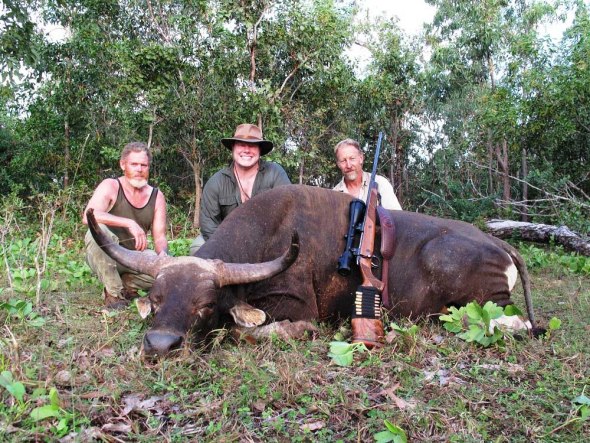
Image: Introduced into Australia in the last century the species is hunted for sport despite the species being listed as endangered within its native range - very little money is raised for preservation of the species within Australasia. Hunting remains outside of Australia as the major number number one threat pushing the species and sub-species into more decline.
This plant was introduced (without adequate risk assessment) as part of an attempt to create a living fire-break around the park’s grasslands, wild fire then being adjudged the major threat to the park’s monsoon forests. Since that introduction, repeated cutting of the acacia has led to coppicing into very dense thickets that contain little or no grass or other herbs and are difficult for the cattle to penetrate. Thus habitat loss and poaching are now serious limiting factors in Baluran National Park, and habitat loss/degradation remains a severe long-term threat to be addressed. Lantana camara (Verbenaceae) is also a problem in Banteng habitat in Baluran National Park and elsewhere on Java.
Bali cattle have long been interbred with other cattle: Banteng and Bali cattle can interbreed with both common cattle and mithan (Bos frontalis). Hybrids between Banteng and common cattle (Bos Taurus) of the zebu type are fully fertile; in hybrids between Banteng and Bos Taurus of the European type the males are sterile. Domestic and feral livestock are thus a potential threat to the genetic integrity of wild Banteng populations and a number of reports suggest that wild Banteng does interbreed with domestic cattle.
For example, Hoogerwerf (1970) referred to several sources from the 1930s and 1940s which mention that many groups of Banteng in Kalimantan (particularly East Kalimantan) were no longer pure-bred having interbred with stray domestic cattle. Wharton (1957) also found evidence of interbreeding with domestic cattle in Cambodia; and reports from Myanmar mention that Banteng feed alongside village cattle and occasionally interbreed with them.
In addition to the genetic threat, domestic livestock are a potential source of diseases and parasites. This can have very serious consequences for Banteng which appear to be particularly susceptible to a number of cattle diseases; for example, Banteng populations in Myanmar have been very badly affected by diseases from domestic cattle.
Introgression with domestic cattle is not presently an issue in Sabah; there have been imports of Bali cattle mostly by large cattle farms who house animals in feedlots away from wild populations. Ahmad AH is unaware of any instances of deliberate introduction of Bali cattle or other domestic oxen into forest areas, or of any plantation holders that have deliberately introduced their cattle into the range of wild Banteng. Although integration of livestock into oil palm plantation has been discussed for many years, this has not yet been put into practice.
In all due respects its quite likely were going to lose the species due to unregulated hunting, controlled over hunting, poaching, traditional medicine trade, habitat destruction and fragmentation, land conversion and agriculture.
Video: Female Banteng
Thank you for reading.
Dr Jose C. Depre
With thanks and much appreciation to the Environmental Team at - International Animal Rescue Foundation Asia.
Say No To Dog Meat - Official Global Demonstration For Dogs and Cats. Part I of III
Two years of intense planning finally paid off for the Say No To Dog Meat organisation this April with mass peaceful demonstrations organised around the globe hitting cities internationally by storm. Only one minor disruption was seen in Cambodia with a further three events called off due to sickness and weather events.
Say No To Dog Meat a registered Australian organisation that’s in the process of becoming a legitimate charity in Australia and soon in the United Kingdom kicked off events in Brisbane, Perth, Sydney and Melbourne. From there the organisations events then began sweeping the globe hitting Malaysia, Japan, Hong Kong, China, Viet Nam, Philippines, Cambodia, Borneo, Israeli, India and finally South Africa in Durban and Johannesburg.
Excited and jubilant animal lovers then began their events in London, Yorkshire, Belfast then onto to mainland Europe where events where held in Sweden, Germany, Portugal and France. By the time events had just come to a finish in Africa, Australia, Asia and Europe Say No To Dog Meat’s events then kicked off big time in America and Canada that saw over ten states in America hosting peaceful demonstrations from Los Angeles, Las Vegas, New York, Ohio, Seattle - Washington, Texas, San Francisco, Alaska, Florida, Hawaii and finally Oregon.
As dawn arose over Indonesia masses of people then began meeting up in Jakarta, Bali, Surabaya and Jogja. Meanwhile in countries where people were not able to hold events due to work commitments or coming on board to late citizens all over the globe sent into us their personal message which was not only heart-warming but did bring a tear to some of the Directors eyes. Schools in China, Belgium, Philippines and Cambodia held their own small awareness event. Be it sending us in photos or in the video below saying “Say No To Dog Meat”.. Children in the Philippines wrote the message “Say No To Dog Meat” on their hands then verbally sent their message that is going viral. Well done children.
Say No To Dog Meat events management team and and Directors Michele Brown, Jose Depre and Donna Armes stated that they never expected to see such a massive turnout especially within Asia where demonstrations are not always allowed. However going through the thousands of emails we received going back a year a half ago we can see now that people did hold to their promise and joined us for the worlds largest anti dog and cat meat trade demonstration ever held stated Jose.
We cannot put a number on how many people turned up however, can say that it was in the thousands of which we are so proud of everyone involved. The most important people behind this event were of course the event organizers all of which joined early last year. If it were not for them or the many active organisations that stand with us this demonstration would never have blossomed into the worlds largest event for dogs and cats in the horrific pet meat trade stated Michele Brown.
Much positive feed back has come back from the event organizers, organisations and members of the public.
Brisbane - Australia.
Michele, Director of Say No To Dog Meat whom kicked the first of all rallies off in Brisbane stated:
The Brisbane rally made my heart swell, at the outpouring of love and support in our fight to end the pet meat trade. Around 30 people attended and a few hundred people passed-by to sign petitions. In a city that’s known to be tough to hold rallies in, our Brisbane supporters were outstanding and I felt incredibly humbled to be surrounded by such passionate and kind hearted people, who worked so hard to help us raise awareness on the day. It was a privilege to be amongst them. Thank you to all Brisbane supporters; I couldn’t have done it without you!
America - Seattle, Washington.
Cindy whom held the Seattle Washington rally stated:
I felt that We were part of a larger movement and we were happy that attention is being brought to this gruesome trade. Happy to be part of an organization working to end it!
America - New York.
Meanwhile in New York Zannah Mass pictured at the front center stated:
New Yorkers and New York dogs took a sky-scraping stand for less fortunate dogs in Asia, Africa, Switzerland as well as US and Canada in smaller numbers as part of the disastrous pet meat trade of kidnapping, torture, and lies for money. Say No To Dog Meat.Net is Run by champions of the cause, brave folks on the front lines. SNTDM is a great resource for the rest of us.
South Africa - Durban and Johannesburg.
Both Celeste Manfron and Celeste Zeilinga from South Africa hosted events too. Celeste Manfron whom appeared in the local press stated and who’s participants are above stated:
The trade is absolutely horrific, it sees the torture of innocent cats and dogs for medicinal reasons, and the more torture the dog and cat endures the better tasting the meat. It includes skinning, blow torching and boiling the dogs alive or semi conscious so that they can still fell pain. Manfron went onto say “we want to let the world know, and let these countries know trade must end”.
Celeste Zeilinga and team are pictured below, both South African animal lovers not only helped but became part of the worlds first international global demonstrations for dogs and cats in the horrific pet meat trade never seen on this scale.
When Say No To Dog Meat officially launched they included within their program an “Anti Racism” mission that has been supported by thousands of Asian citizens across the globe. International Animal Rescue Foundation and Say No To Dog Meat launched the Anti Racism mission to prove to the non-Asian public that the people of Asia want the barbaric dog and cat meat trade banned just as much as non-Asians do.
Dr Jose Depre Environmental and Botanical scientist stated “When ever we documented on the pet or even bush meat trade we’d read countless comments from members of the public that stated Asians were all hateful down to consuming anything that walked, that statement is just not true furthermore as part of our Anti Racism program we’ve proved its not true”. Jose said “winning the hearts and minds of Asian citizens was incredibly tough and at times a frustrating task, especially when you heard or read the most vulgar racist comments spat at innocent Asians just because they’re facial features appear identical, that’s uncalled for and something we had to work to stop”..
We did it and we’re going to continue winning more hearts and minds internationally until this trade is banished from the entire Asian continent for good he said. The proof is in the video that shows hundreds and hundreds of Asian citizens marching with Say No To Dog Meat 4th April 2015.
Meanwhile though in Africa banning the trade outright without taking into account poverty, hunger and climate change would see people die from hunger and malnutrition as many actually rely on dog and cat meat as their only form of food income in poverty stricken villages, communities and countries. The organisation stated that in countries such as Kenya, Sierra Leone, Liberia, Nigeria, Ghana and Niger climate change has ravished many communities of which rain fall in some villages hasn’t been seen in either months or over year.
We have an incredible mission on our hands of which we need to improve soil structure, increase irrigation and water wells, implement tougher X breeds of flora I.e maize and corn to withstand the extreme drought and further worsening of climate. Lastly an education and awareness program must be introduced to slowly ween people in pet and bush meat eating communities off the both via education on diseases, virus and food safety not forgetting the largest problem which is rabies that kills one person in Africa every 10 minutes.
Meanwhile all over the globe thousands of people took to the streets and demonstrated peacefully to highlight the barbaric treatment of dogs and cats in the meat-trade.
Sharna from Melbourne, Victoria - Australia pictured below stated “I felt our numbers couldn’t of been greater but still an amazing turn out. Including a member of parliament in our mist”.
Rain did threaten to put a stop to some events in Australia however, kind compassionate citizens a-stand with Lorraine Price pictured speaking in Sydney still braved on despite Australia under heavy monsoon weathers. Check the Sydney crew below of which all helped create history.
In Perth, Western Australia Leanne and team pictured below hosted a further Australian event with good turnout too. Well done ladies.
Amanda and her fellow comrades pictured below from Ottawa, Canada held a peaceful demonstration in Canada where its still unknown weather the dog and cat meat trade is legal or not. Talks are still ongoing to get to the bottom of the truth in Canada regarding a statement that had been placed on a “Wikipedia” website. Say No To Dog Meat investigated this issue further and was told no such trade was permitted however, when asked if its illegal to kill dogs for private consumption this question out of all was neither answered or responded too by Food Safety and Agriculture.
In Tel Aviv, Israel compassionate activists took to the streets to hold a sarcastic theatrical demonstration educating the public and children on the horrors of the dog and cat meat trade (pics 1-2 below). As one can see many people were either unaware the trade existed or knew very little about the trade at all.
India, Chennai Say No To Dog Meat supporter Arya pictured below hosted an educative demonstration about the dog and cat meat trade to some forty or more people.
Las Vegas, America Nancy really kicked off the events in style marching for justice of dogs and cats in the African and Asian pet meat trade. This demo was pretty large and was headed by drummers and professional photographers. The event really went down well seeing members of the public and children educated kindly without the use of graphic images.
Meanwhile in Los Angeles pictured below some fifty or more people attended to show their support at the Santa Monica Harbor of which was a great day for all. In over fifty cites worldwide Say No To Dog Meat’s events were not just about holding a banner or poster up. Educative speeches or events and petition signing were held to educate and make aware up to date facts and history on both the African and Asian pet meat trade. Zaida and Christina hosted this event featuring on major news channels across Los Angeles. Christina stated “It’s great to connect with compassionate people. To see people taking action in what they believe in is powerful”. While Zaida said “It was wonderful to see the people come together. to march for what they believe in, to stop the dog and cat meat trade. Together we will end the barbaric trade”…
Regardless of how small an event was or how large the fact is you attended and made your voice heard throughout the planet. Meet April below. She may have had only a small number of people attend however, she had one of America’s well known journalists cover a brief story for her beaming live across the United States. Check out the coverage >here< by April who achieved marvelous results. Well done April..
Animal lovers united even in Alaska. Rhonda and co took to the local park to make their voices heard. Pictured below setting up their event.
Peaceful demonstrations took a-hold in San Francisco hosted by Liesel. Donning banners and posters saying no to dog meat dogs were dressed as little sausage dogs as a statement to show dogs are not food. Liesel can be seen pictured with peaceful activists.
Meanwhile in Hawaii information points were established of which Say No To Dog Meat directed people to the stands via international advertising and awareness. Information stands are very important in large foot traffic zones and were held in Europe too. Handing out flyers and brochures Michele from Hawaii educated inquisitive members of the public on both the Africans and Asian pet meat trade.
Michele left and friend to the right - Hawaii.
Peaceful activists took the beeches of Florida holding a small event showing their support for our mission and innocent dogs and cats brutally tortured and killed slowly in the pet meat trade. Karina and co are pictured below. Great job ladies. 
Due to the high volume and incoming images and videos we have decided to split the document in to three parts. Don’t forget to book mark us for more amazing images and videos from Say No To Dog Meat’s first of many global demonstrations and events. If you’d you like to know more or become involved in #OperationUnite which is set to take the globe by storm please contact us here today at: [email protected]
Thank you for reading and, don’t forget to come back tomorrow for more amazing images and stories.
Editor

